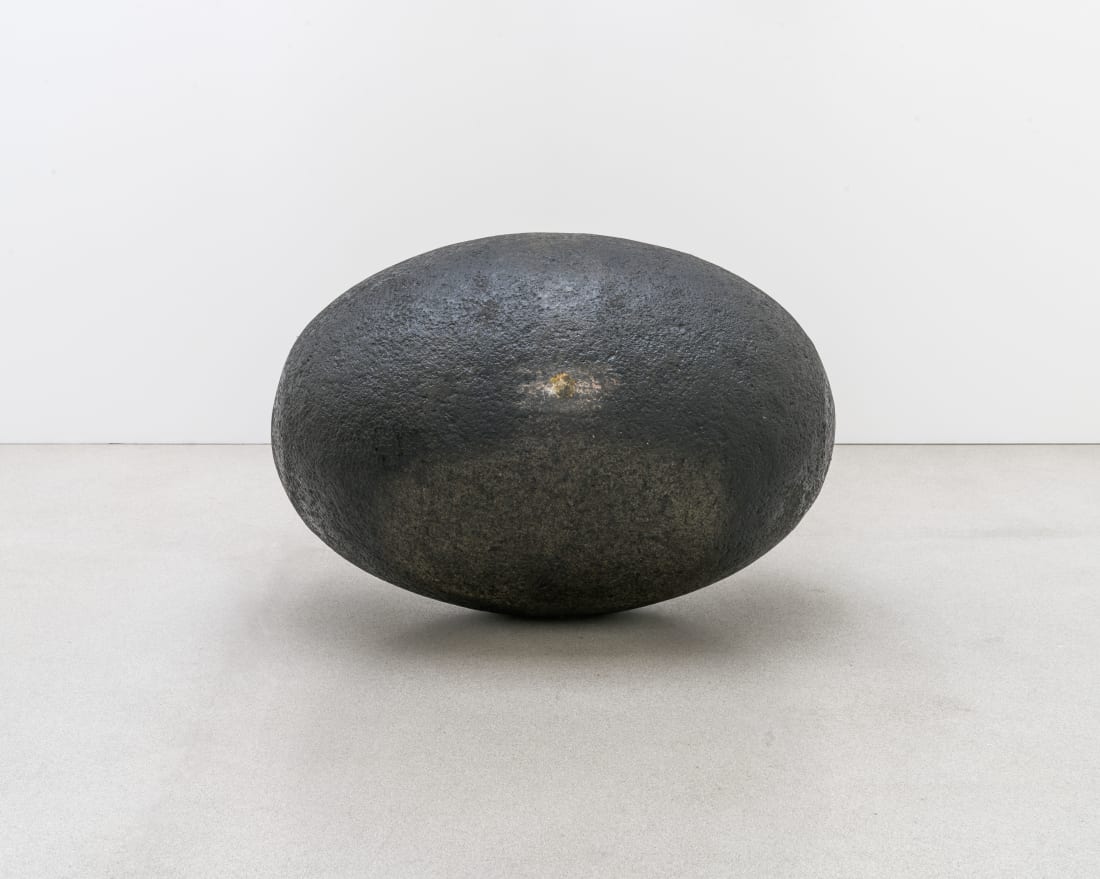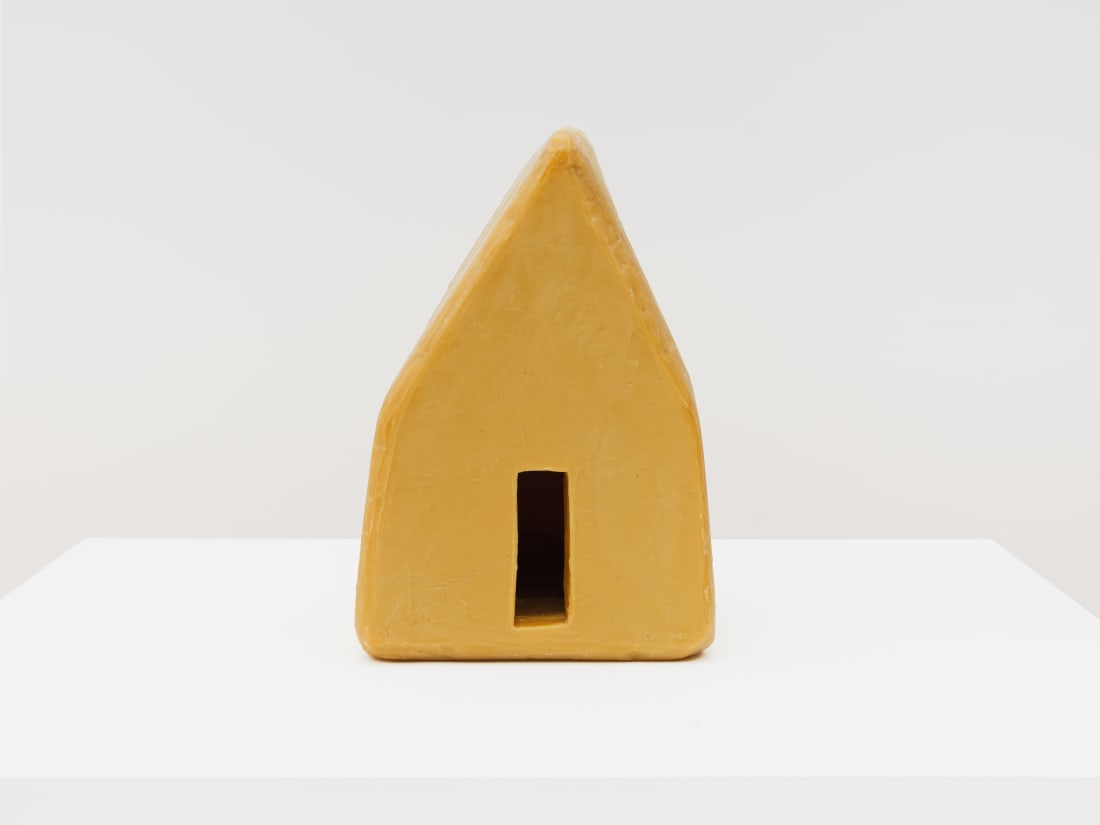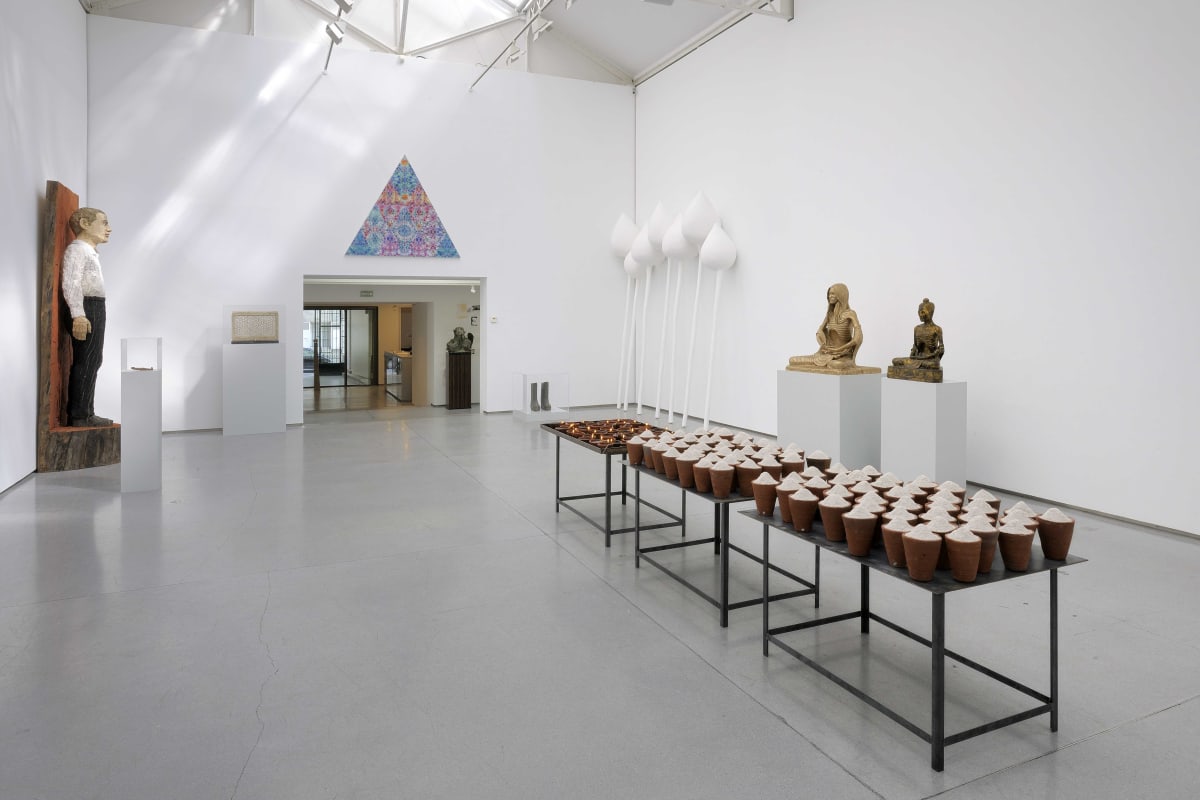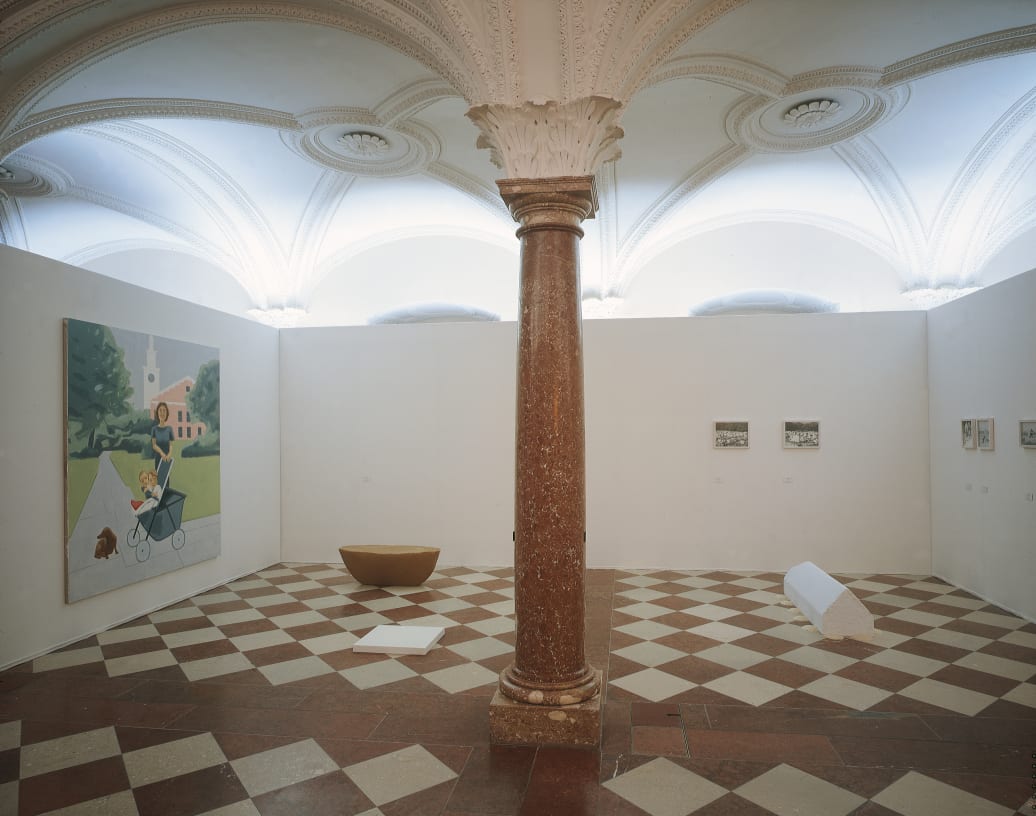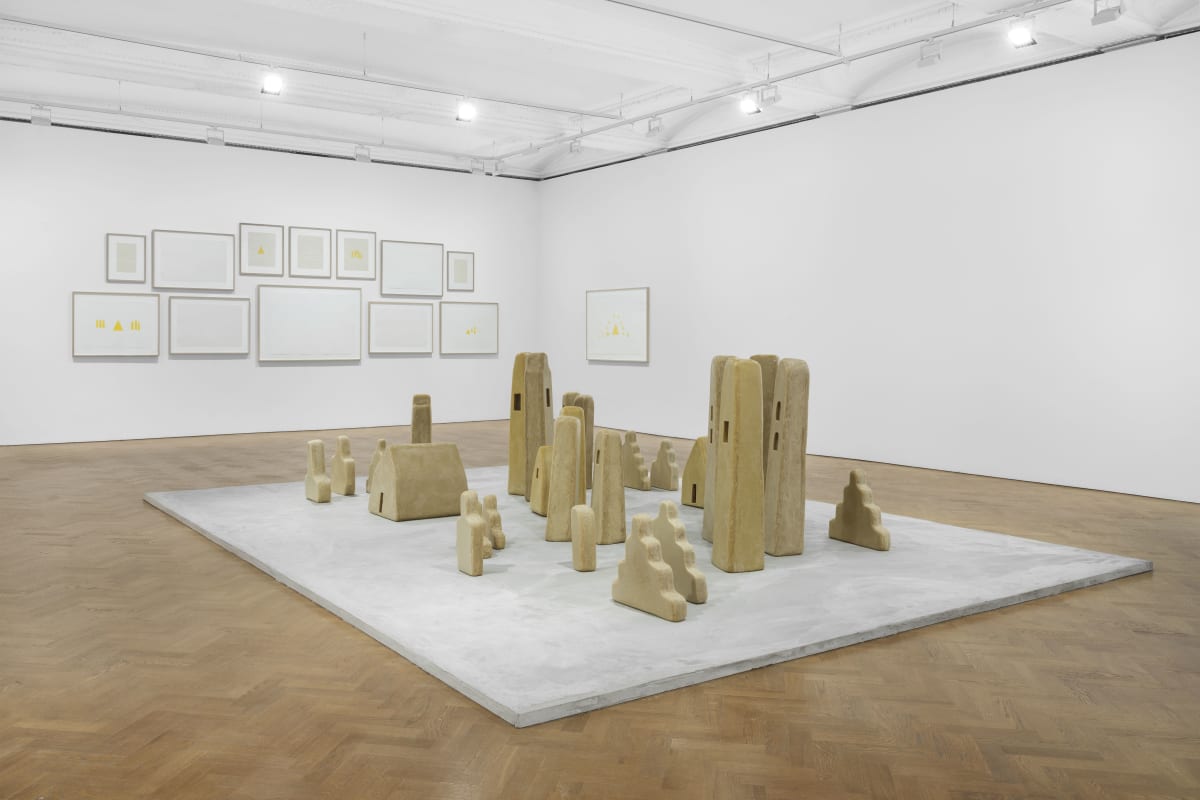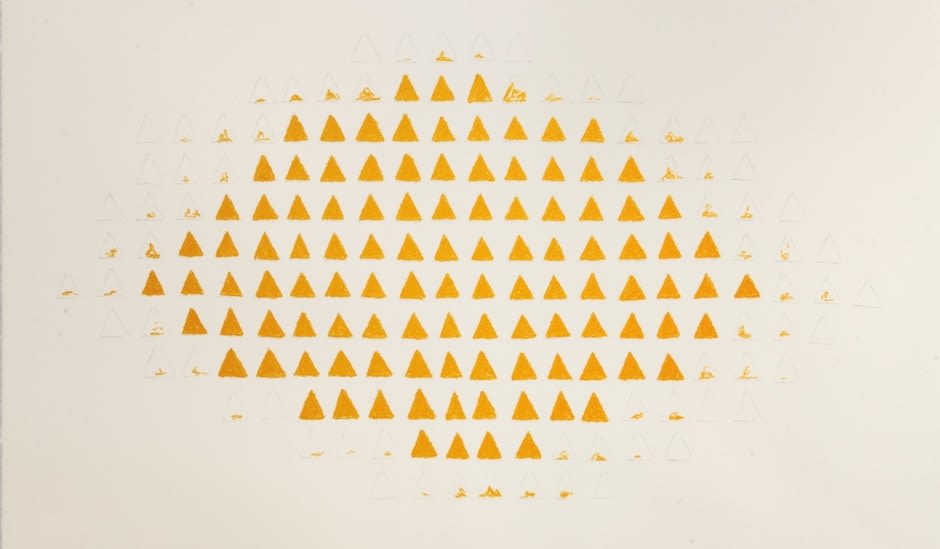

Wolfgang Laib
Overview
'The more you complicate things, the more you lose. In renouncing you achieve more.'
Wolfgang Laib creates sculptures and installations that seem to connect past and present, the ephemeral and the eternal. He employs simple, yet highly symbolic, organic materials that are usually associated with sustenance, such as pollen, milk, beeswax and rice. He arranges a limited number of elements in a formal way, following a rigorous process of conception and installation. Ritual plays a central role in the process of reduction and contributes to his spare aesthetic. Each year, during the spring and summer months, he collects pollen from the fields surrounding his home in a remote region of Germany's Black Forest, displaying this laboriously gathered material in simple glass jars or sifting it directly onto the floor to create large fields of spectacular colour.
Laib's work is profoundly connected to his experiences in India and Southeast Asia, regions that he first visited on family trips as a young teenager. Over his 40-year career, he has always been less concerned with innovation or formal development than with continuity. Following a mode of thinking central to many Eastern philosophies, he considers himself a vehicle for ideas of universality and timelessness already present in nature. As the artist describes: 'The pollen recalls the beginning and creation; the rice mountains and the beeswax Ziggurat (pyramid and steps) nourishment and the bond of the sky with the earth; in the end, fire recalls destruction and the possible renewal of the world, the transformation of what is physical to a new cycle, to a state of change.' Channelling these principles, his works invite a contemplative, even meditative, engagement from the viewer.
Wolfgang Laib creates sculptures and installations that seem to connect past and present, the ephemeral and the eternal. He employs simple, yet highly symbolic, organic materials that are usually associated with sustenance, such as pollen, milk, beeswax and rice. He arranges a limited number of elements in a formal way, following a rigorous process of conception and installation. Ritual plays a central role in the process of reduction and contributes to his spare aesthetic. Each year, during the spring and summer months, he collects pollen from the fields surrounding his home in a remote region of Germany's Black Forest, displaying this laboriously gathered material in simple glass jars or sifting it directly onto the floor to create large fields of spectacular colour.
Laib's work is profoundly connected to his experiences in India and Southeast Asia, regions that he first visited on family trips as a young teenager. Over his 40-year career, he has always been less concerned with innovation or formal development than with continuity. Following a mode of thinking central to many Eastern philosophies, he considers himself a vehicle for ideas of universality and timelessness already present in nature. As the artist describes: 'The pollen recalls the beginning and creation; the rice mountains and the beeswax Ziggurat (pyramid and steps) nourishment and the bond of the sky with the earth; in the end, fire recalls destruction and the possible renewal of the world, the transformation of what is physical to a new cycle, to a state of change.' Channelling these principles, his works invite a contemplative, even meditative, engagement from the viewer.
Born in Metzingen, Germany, Wolfgang Laib studied medicine at the University of Tübingen from 1968–74 before becoming an artist. His work was presented at documenta in 1982 and 1987, and his first major institutional exhibition was held at the Musée d’art moderne de la ville de Paris in 1986. He has subsequently been the subject of numerous solo exhibitions, notably at the Hirshhorn Museum and Sculpture Garden, Washington, D.C. (2002); Dallas Museum of Art (2002); Haus der Kunst, Munich (2002–03); Fondation Beyeler, Basel (2005–06); Fondazione Merz, Turin (2009); and MMK Museum für Moderne Kunst, Frankfurt (2010). His largest pollen piece to date was installed in the atrium of The Museum of Modern Art, New York in 2013. The same year, the artist’s first permanent installation of a beeswax room opened at The Phillips Collection in Washington, D.C. In 2014, Laib’s From the Known to the Unknown—To Where Is Your Oracle Leading You, a 40-metre-long underground chamber made of beeswax, was permanently installed in Anselm Kiefer’s studio La Ribaute in Barjac. In 2015, he was awarded the Praemium Imperiale in Tokyo. In 2017, an exhibition of his work was shown at the Secretariat in Yangon, Myanmar and a survey show was organised by the Museo d’arte della Svizzera italiana, Lugano, Switzerland. In 2019, several of Laib’s works were shown across historical sites in Florence, Italy, in a city-wide exhibition organised by the Museo del Novecento. In 2022, the Bündner Kunstmuseum Chur, Switzerland presented his temporary installation of a laid-out field comprised of thousands of rice mounds and in 2023 the Kunstmuseum Stuttgart presented a major retrospective exhibition, including the artist's latest works.
Videos

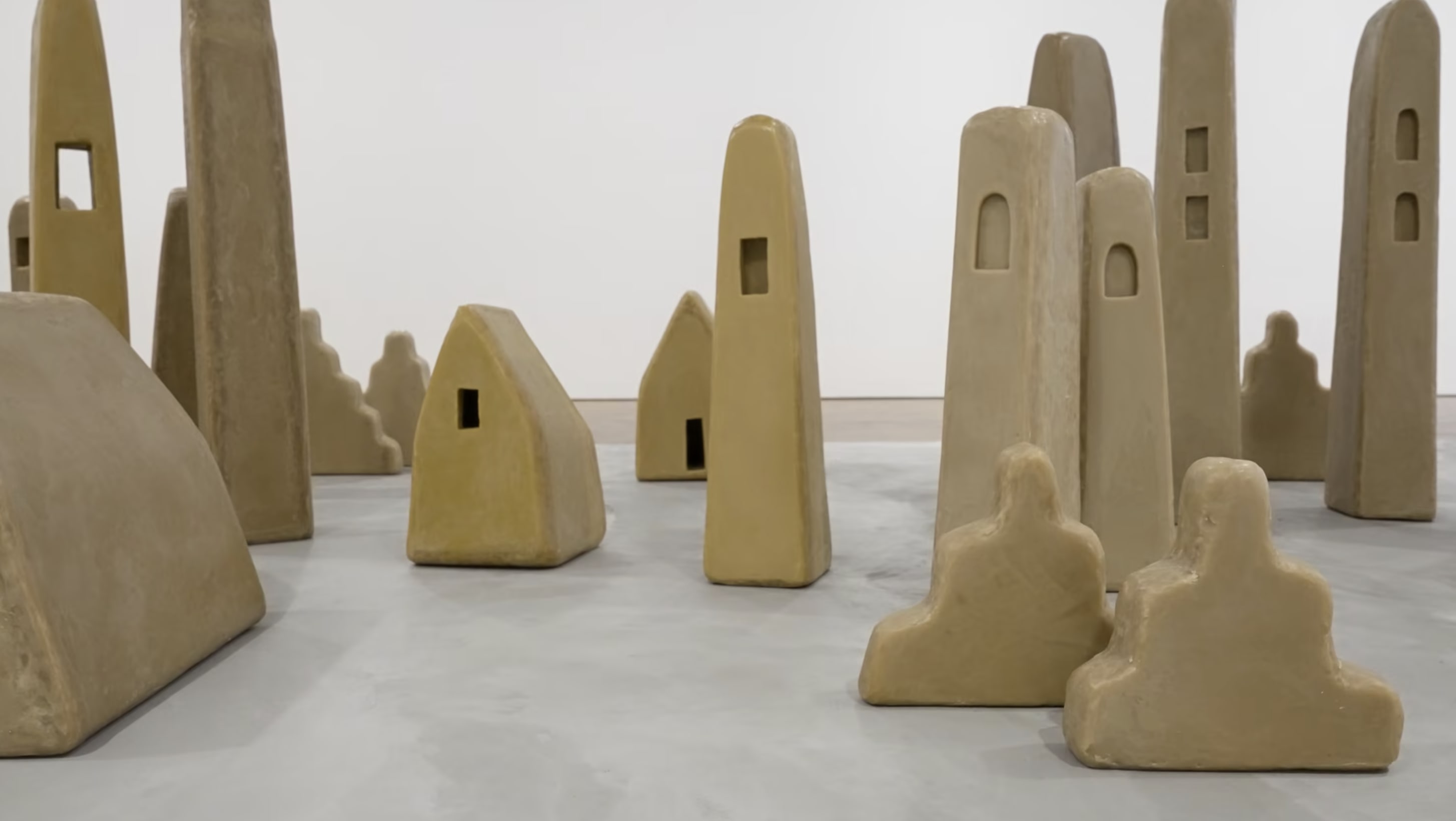

Artworks

Expositions












